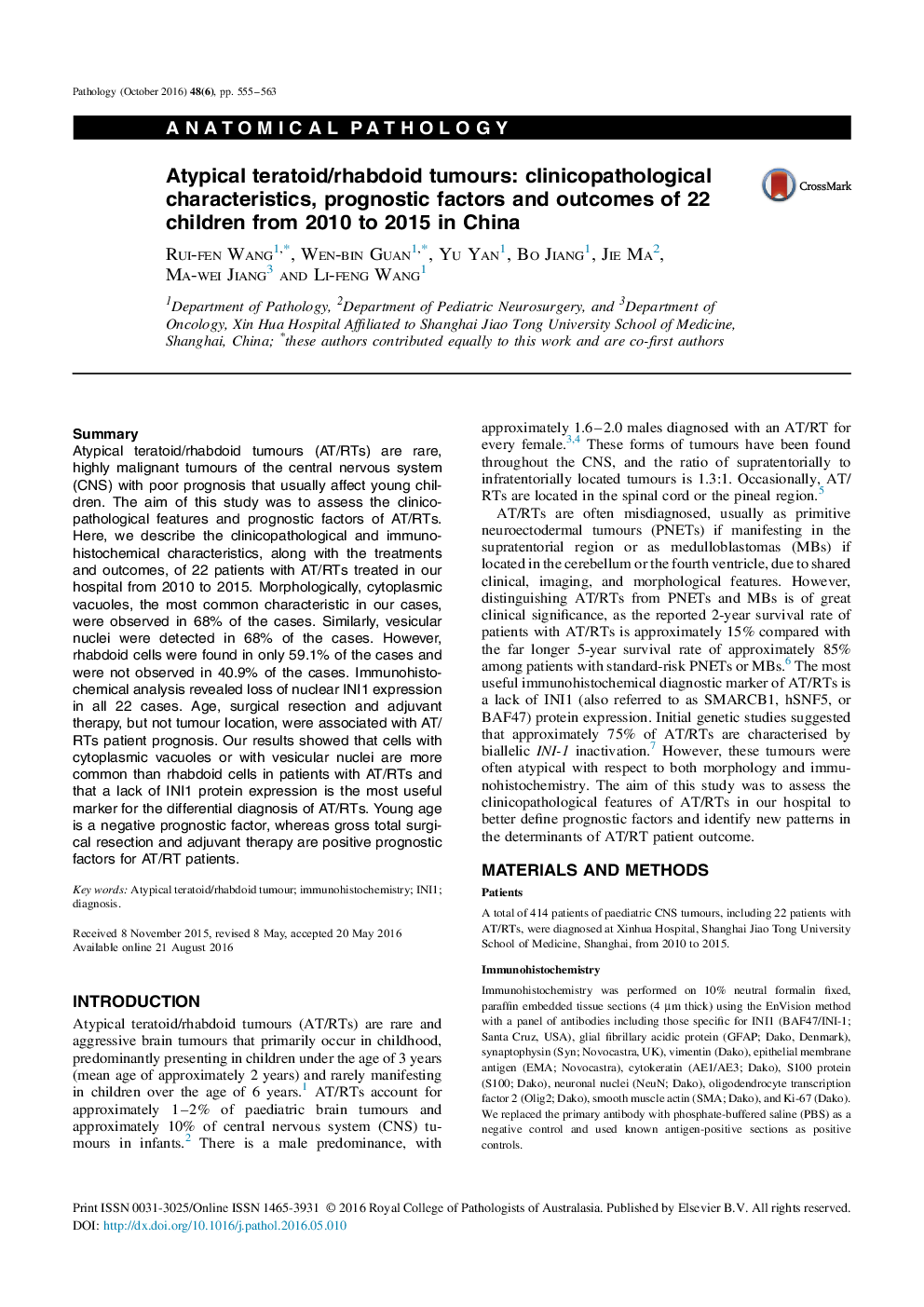| Article ID | Journal | Published Year | Pages | File Type |
|---|---|---|---|---|
| 6463142 | Pathology | 2016 | 9 Pages |
SummaryAtypical teratoid/rhabdoid tumours (AT/RTs) are rare, highly malignant tumours of the central nervous system (CNS) with poor prognosis that usually affect young children. The aim of this study was to assess the clinicopathological features and prognostic factors of AT/RTs. Here, we describe the clinicopathological and immunohistochemical characteristics, along with the treatments and outcomes, of 22 patients with AT/RTs treated in our hospital from 2010 to 2015. Morphologically, cytoplasmic vacuoles, the most common characteristic in our cases, were observed in 68% of the cases. Similarly, vesicular nuclei were detected in 68% of the cases. However, rhabdoid cells were found in only 59.1% of the cases and were not observed in 40.9% of the cases. Immunohistochemical analysis revealed loss of nuclear INI1 expression in all 22 cases. Age, surgical resection and adjuvant therapy, but not tumour location, were associated with AT/RTs patient prognosis. Our results showed that cells with cytoplasmic vacuoles or with vesicular nuclei are more common than rhabdoid cells in patients with AT/RTs and that a lack of INI1 protein expression is the most useful marker for the differential diagnosis of AT/RTs. Young age is a negative prognostic factor, whereas gross total surgical resection and adjuvant therapy are positive prognostic factors for AT/RT patients.
